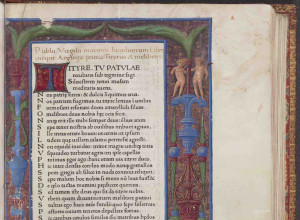Cats in Medieval Manuscripts Feature in New Baltimore Exhibition

Cat playing the organ, detail from late 15th-century prayer book, illuminated by followers of Willem Vrelant of Bruges
The first of three animal-themed exhibitions at the Walters Art Museum in Baltimore highlights the portrayal of cats in the margins of medieval manuscripts.
Centuries before internet cat memes, the antics of felines were already popular in the margins of medieval manuscripts. Paws on Parchment - on view in the Walters’ Manuscript Gallery through February 15, 2026 - explores how medieval people thought about, engaged with, and admired cats through the animals’ presence in manuscripts from the period.
“Cats filled many important roles in the medieval era,” said Lynley Anne Herbert, Robert and Nancy Hall Curator of Rare Books and Manuscripts. “Like today, some cats were considered beloved pets whose behavior amused and exasperated their owners. However, felines also served an important function as hunters that protected valuable books and textiles, food stores, and even people from disease-carrying rodents and other vermin. Cats could also carry symbolic and moral meaning in this period, which is reflected in the manuscripts we will have on view.”
The exhibition features depictions of cats preserved in the pages of European, Islamic, and Armenian manuscripts, including a 15th century 'keyboard cat' playing the organ, and real pawprints left by a cat walking across the pages of a Flemish manuscript as the ink dried in the 1470s.
“The presence of animals in our daily lives is an enduring but fragile phenomenon,” said Ani Proser, Chief Curator and Mr. and Mrs. Thomas Quincy Scott Curator of Asian Art. “The dynamic between humans and animals is varied. By centering animals and art objects related to them, we are able to connect with people from ancient civilizations. Through these works, we can learn about the daily lives of the people who commissioned, created, and used these objects, and we can better understand the myriad roles animals played across time and throughout the world.”
Following this exhibition, the gallery will host Medieval Mindscapes: Interiority and Imagination in Books of Hours from February to August 2026.















